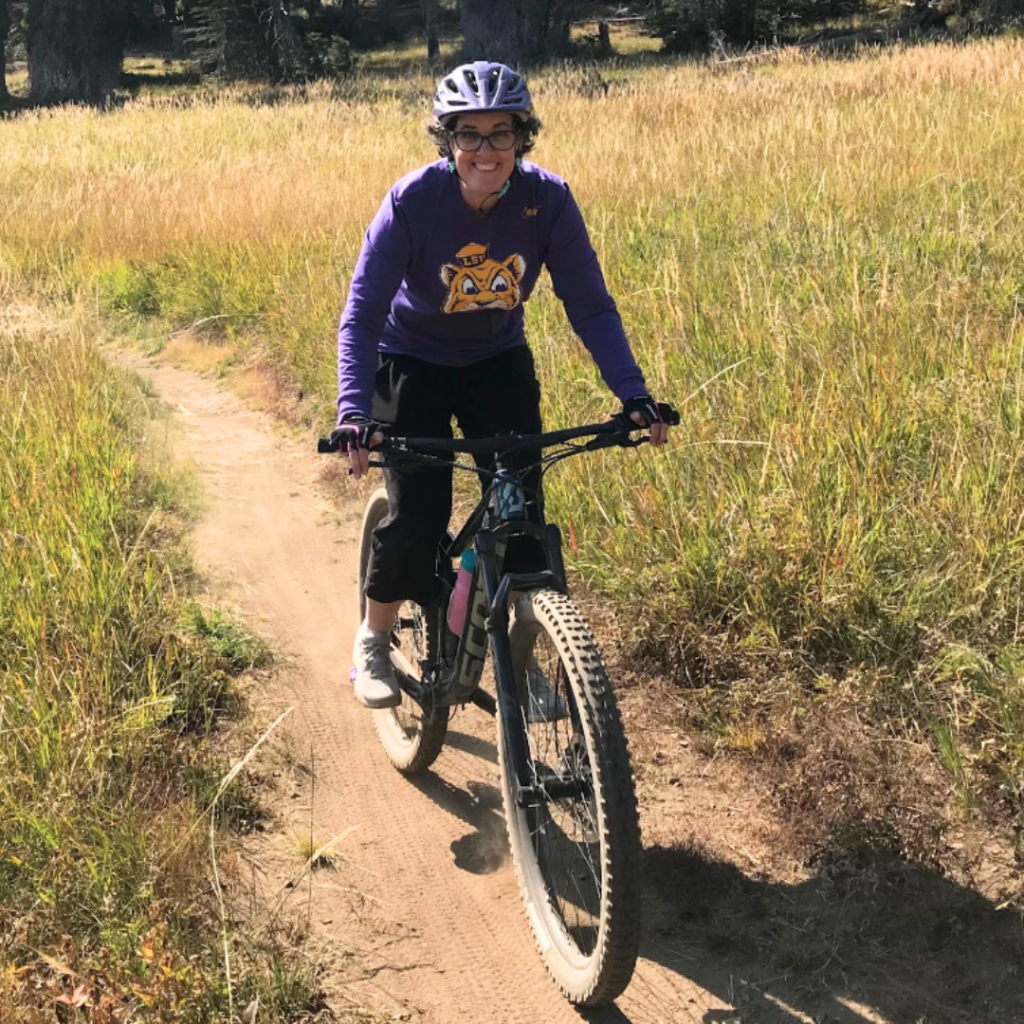👋 French Level 1, Activity 02: Salutations et présentations / Greetings and Introductions (Face-to-Face)- Remix by Sharon Westbrook
Sharon Westbrook
Remixed by Sharon Westbrook
Riverglen Junior High
Description:
Students will practice introducing themselves, greeting someone formally and informally at different times of day, and answering how they are doing. They will also learn about how to do la bise and about the geopolitical divisions of France. This activity has been revised to make it more appropriate for students in grades 7-9. Can-Do statements have been changed to focus on self, images more suitable for junior high students have been added, and vocabulary and instructions have been glossed and simplified.
Semantic Topics:
introductions, greetings, time of day, places, les salutations, présentations, l’heure, structure of questions, correct subject and verb placement in a sentence, la structure d’une question, l’arrangement des verbes et des noms dans une phrase, departments, départements, la bise, gauche, droite, right, left.
Products:
La bise, handshake, a verbal greeting, départements in France
Practices:
Giving a kiss as a greeting, the use of forms of discourse (formal vs. informal)
Perspectives:
Name a situation in which it would be important to remember to use formal language with someone.
NCSSFL-ACTFL World-Readiness Standards:
- Standard 1.1: Students engage in conversations or correspondence in French to provide and obtain information, express feelings and emotions, and exchange opinions.
- Standard 1.2: Students understand and interpret spoken and written French on a variety of topics.
- Standard 2.1: Students demonstrate an understanding of the relationship between the practices and perspectives of the cultures of the francophone world.
- Standard 4.2: Students demonstrate understanding of the concept of culture through comparisons of francophone cultures and their own
Idaho Content Standards for World Languages:
- COMM 1.1: Interact and negotiate meaning (spoken, signed, written conversation) to share information, reactions, feelings, and opinions.
- COMM 2.1: Understand, interpret, and analyze what is heard, read, or viewed on a variety of topics.
- CLTR 1.1: Analyze the cultural practices/patterns of behavior accepted as the societal norm in the target culture.
- COMP 1.1: Observe formal and informal forms of language.
NCSSFL-ACTFL Can-Do Statements:
- I can say hello and goodbye to a friend, someone older, or someone I don’t know.
- I can introduce myself.
- I can respond to an introduction.
- I can greet and take leave from someone using polite rehearsed behaviors.
Interpretive Activity
Video that explains how to do la bise in France, maps that explain how many kisses to give, when to start with the left or right cheek, and how France is divided geopolitically.
Materials Needed:
Person cards: 12 famous/everyday people from the Francophone-speaking world. Updated 2022 to reflect more current celebrities. Printed & Laminated
Time of Day Cards: Changed midi to après-midi. Printed & Laminated
Warm-up cards informal and formal: Simplified vocabulary for middle school level students, created second set of cards using “tu” in addition to “vous.” Printed & Laminated
Google Slides Presentation – revised with added interpretive activities and materials
Worksheet [OPTIONAL USE] Use this interactive worksheet as a supplemental tool for the corresponding Pressbook Conversation Activity. It can be used as a way to keep students engaged, provide a place for them to take notes, and track their learning.
Would you like to make changes to the materials? Access the template(s) below:
– Person Cards (Canva template, free account required)
– Time of Day Cards(Canva template, free account required)
– Warm up Cards (Canva template, free account required)
– Worksheet (Canva Template, free account required)
Warm-Up
1. Begin by introducing the Can-Dos and displaying the Rencontrer et Saluer Google slides presentation on the projector screen.
Commencez par présenter les « Can-Do’s » et montrez le « Rencontrer et Saluer » Google slides présentation sur l’écran de projection.
2. First ask the students: « Bonjour! Comment-allez vous? Je suis/vais___. Aujourd’hui, nous allons pratiquer les introductions. » (Hello! How are you? I am__. Today, we are going to practice introductions.)
3. Put students in groups of 2-4. Distribute either 1 set of formal or informal cards to each group. Model putting the cards in order. Have the students work together to put the cards in order. Then ask two students to “play out” the situation by reading the dialogue out loud to their partner or in their small group.
Mettez les élèves en groupes de 2 ou 4. Distribuez les cartes informels ou formels aux étudiants. Montrez aux étudiants comment mettre les cartes en ordre. Demandez-leur de travailler ensemble pour obtenir des scénarios avec les cartes. Par exemple: « Voici une conversation entre deux personnes. Essayez de les mettre en ordre. »
4. Ask the students to match ways to say hi, bye, etc. on slide #4 of the Google slide presentation. Write them on the whiteboard. They can use these as a cheat sheet during the main activity:
Réfléchissez avec les étudiants en leur demandant de relier comment dire bonjour, au revoir, etc. sur diapo numéro 4 du Google slide presentation. Écrivez ces mots au tableau. Ils peuvent les utiliser comme un « cheat sheet » pendant l’activité principale:
Teachers may want to include some of the vocabulary below.
Greeting: Bonjour, Bonsoir, Salut, Coucou, (Faire la bise)
Goodbye: Au revoir, Ciao, Salut, À plus tard, À bientôt, À la prochaine, Bonne journée, Bonne soirée
How is it going: (Comment) ça va? Quoi de neuf? Comment allez-vous/vas-tu? Tu vas/vous allez bien?
Nice to Meet You: Enchanté, Plaisir de faire votre connaissance, Ravi de vous rencontrer
Main Activity
Interpretive Reading:
Detailed teacher instructions are in the speaker notes on each slide in the Google slide presentation.
1. Have students watch the video on how to do la bise on slide #5.
Regardez la vidéo sur diapo #5.
2. Ask students the questions on slide #6.
Posez les questions sur diapo #6 aux élèves.
3. Have students draw a chocolate kiss and write the elements of how to do la bise.
Dessinez un bonbon en form de “Hershey’s kiss” et écrivez les étapes de la bise.
4. Show students slides #8-11, ask the questions on the slides, and review the answers.
Montrez diapos #8 à 11 aux élèves, posez les questions, et discutez les réponses.
Interpersonal Speaking:
Review the instructions on slide #12 with students.
Revisez les instructions sur diapo #12 avec les élèves.
1. Have students pick a card with a time of day (this will determine if we use “Bonjour/Bonsoir”).
Choisissez une carte avec une période de la journée (cela permettra de déterminer si l’on utilise “Bonjour/Bonsoir”).
2. Have each student pick a card with a person. This is the person the students will introduce themselves as and pretend to be.
Chaque étudiant doit choisir une carte. Il s’agira de la personne que l’étudiant devra présenter et prétendre être.
3. Do steps 1 and 2 yourself to show the students what they will be doing.
Faites les étapes 1 et 2 afin de démontrer aux étudiants ce qu’ils devront faire.
4. Have students converse (greetings, introductions, basic questions) as if they were in the scenario, walking around the room. The students should make sure to be aware of whether the person they are talking to requires an informal or formal response.
Demandez aux étudiants de converser entre eux tout en jouant leur rôle. Les étudiants doivent s’assurer de parler de manière formelle ou informelle, selon la personne à qui il/elle s’adresse.
5. Once everyone has had an opportunity to practice, trade the cards.
Lorsque tous les étudiants auront eu l’opportunité de converser, échanger les cartes.
wrap-Up
Ask the following question(s) to finish the activity:
1. Quel est ton mot préféré pour dire « bonjour »? (What is your preferred way to say hello?)
2. Quel est ton mot préféré pour dire « au revoir »? (What is your preferred way to say goodbye?)
Teachers can then explain how to use the word bisous as per the speaker notes on slide #13.
Cultural Resources
Video in French with French and English subtitles explaining how to greet someone in France in more detail:
End of Activity
- Read Can-Do statements once more and have students evaluate
their confidence.
(Use thumbs up/thumbs down or download our student cards.) - Encourage students to be honest in their self-evaluation.
- Pay attention, and try to use feedback for future activities!
NCSSFL-ACTFL Can-Do Statements:
- I can say hello and goodbye to a friend, someone older, or someone I don’t know.
- I can introduce myself.
- I can respond to an introduction.
- I can greet and take leave from someone using polite rehearsed behaviors.



